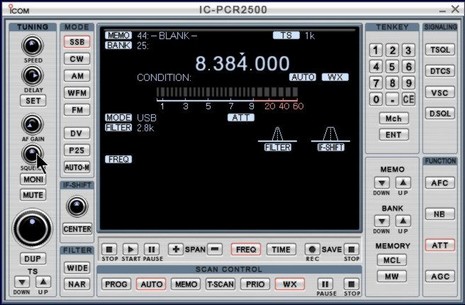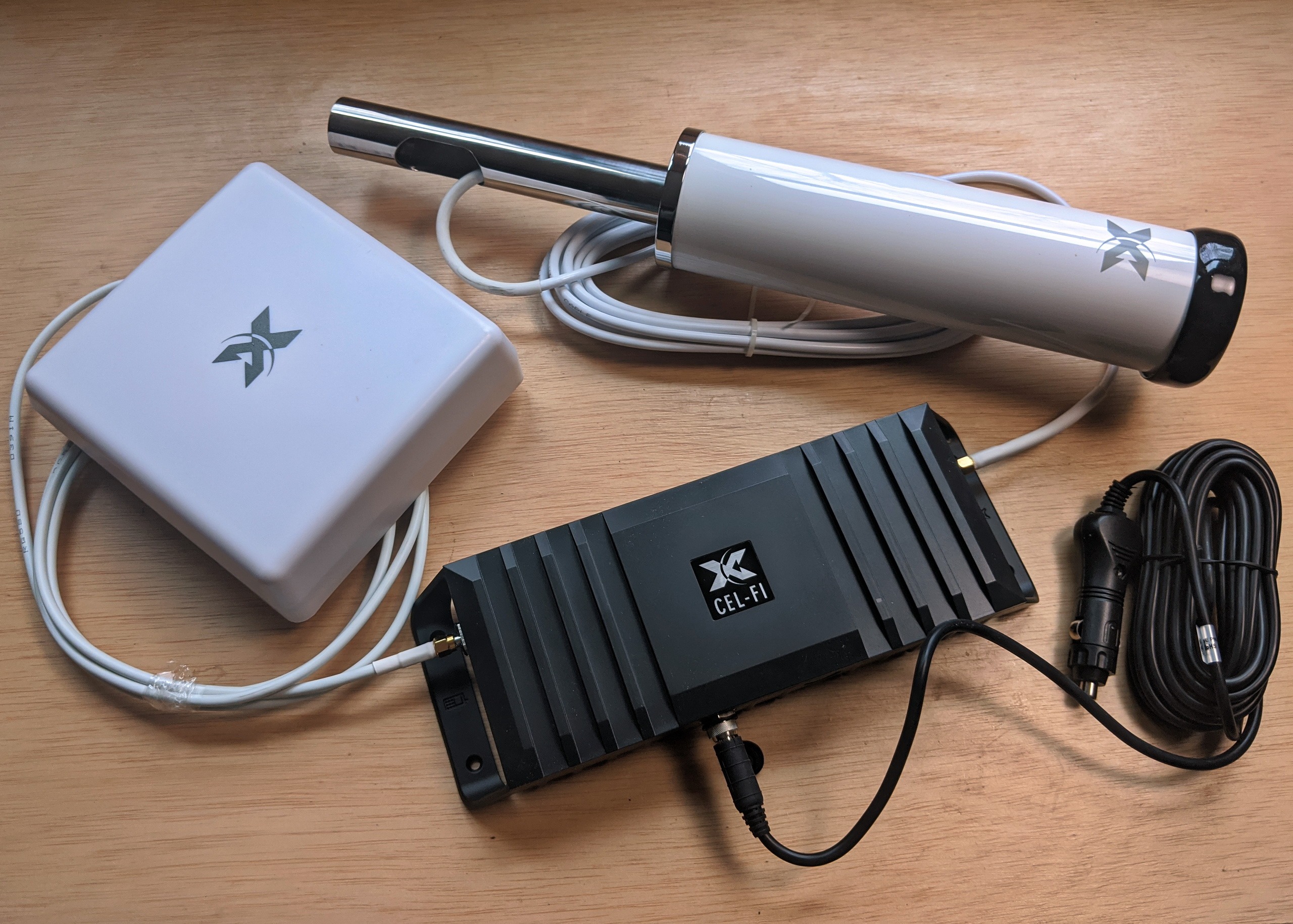Icom PCR, name a frequency!

I’m back in Maine briefly, which means I’m back to testing a couple of black box wideband radio receivers. And I mean WIDE. The Icom PCR2500 can tune in most anything from 10 kHz to 3300 MHz—less a few gaps like the cell phone bands (you have to be official to get that model). And I’ve got a pretty serious antenna strung from the peak of my house across the backyard. Some mornings I’ve heard participants in the Waterway Net at 7.268 MHz LSB, including some who seemed to be in the Chesapeake and one voice I’m pretty sure I recognized as Marti Brown, who was probably transmitting from her boat in Marathon, FL. But frankly I’m fairly rusty at marine single sideband use, and know zilch about amateur radio (HAM) usage. So if anyone has suggestions for interesting frequencies I might find signal on up here at 45N 67W, I’m all ears, so to speak. I’m also very interested in hearing from you boaters who are using HF transceivers or receivers now, or plan to when you head over the horizon in that dream boat. I’m about to write a column about PC-controlled receivers specifically and the use of SSB, HAM, Navtex, Weatherfax, cruising nets, etc. Thanks in advance for any and all input!














Ben:
I LOVE PANBO!!!!! THANK YOU!!!
DO you plan to do a deep dive in Furuno NavNet 3D soon? Hope so.
From an avid visitor to Panbo.
Keegan
Hi Ben:
Well there a many nets on Ham Radio beside the Waterway net. Another is on 14300 MHZ called the Maritime Mobile Net supposedly 24/7 but with adjustments for propagation and adjacent channel interference. There is also SouthBound II who holds forth on 12359 MHZ USb everyday. Herb provides weather adviseries for vessels at sea based on his research and input from others in the Atlantic. I have attached a couple of links for your information.
http://www3.sympatico.ca/hehilgen/vax498.htm
http://www.docksideradio.com/east_coast.htm
Cal.
I’m going cruising and I plan to have an Icom 802 with an SCS pactor modem. The most frequent use will be for voice communication and the various cruiser nets of which there are way too many to list.
The secondary use will be to pull all manner of weather information from Saildocs and Winlink. My primary access to both of these sources will be via sat comm, probably Iridium for starters, but the SSB/Pactor modem combo is the backup to the sat phone.
If necessary, much of the weather info can be retrieved directly from the SSB via navtex, weatherfax, etc., but that’s really the slower and more painful way to pull the data.
Hi Ben,
Am sure you’ve heard of Pandora’s Box?
Anyhow, here’s my take since I’ve been using HF radio over the past 19 years of cruising.
In the ‘early’ days .. 80s and early 90s .. we were limited to using HF for amateur maritime mobile nets and for receiving weather fax (WEFAX) which, in my case, I decoded with a Tandy 32K computer and spit out the fax line by line onto a dot matrix printer. On the maritime mobile nets we used phone patches through the courtesy of land based stations for contact with family and friends. Amateur precludes the use of commercial traffic so a phone call to a friend for ‘one package number 1234567’ usually meant an order to West Marine for that model number. But I never did that, did I?
But then the introduction of digital traffic over HF radio arrived and made life so much easier if not better. First from the amateur world using message traffic relayed from station to station which was email-like … but still, no commercial traffic allowed. This required a modem and coding called Pactor. Except for the modem hardware, everything else was free. Then the modem manufacturer SCS (owned by several German hams) began producing modems with digital signal processing and they gave away the coding Pactor 2 which was a big improvement in speed. They then introduced Pactor 3, much faster still, but charged for it (and still do). About this time several commercial enterprises began selling service using the SSB marine frequencies … and the commercial taboo went away.
From the beginning a yachtie, Jim Corenman, began giving away software called ‘Airmail’ which, with the SCS Pactor 3 modem, has become the ‘yachtie industry standard’ for email, and WEFAX, NAVTEX, teleype and morse reception as well. The Airmail software has companion programs for receiving and displaying this other digital information in addition to the email part of the program. This combination of hardware and software is used in the ham world over the free Winlink system (still with amateur rules) and over the commercial Sailmail sytem. Both have world wide coverage with the Winlink system still being free and Sailmail costing $250 per year.
Today I use both Winlink and Sailmail. My hardware is an ICOM-M710 HF, SCS PTC-IIex modem and the Airmail software. My message traffic includes GRIB weather files sent daily for weather projections. I view these files with the companion Airmail program ‘ViewFax’ and the recently available UGRIB software. I also receive weather faxes using the ‘GetFax’ program (and view them with ViewFax). In addition, I use the same setup to receive NAVTEX broadcasts and teletype broadcasts from the USCG.
The Airmail program has the capability to control the HF radio so I never need to twist knobs or punch buttons. Automatic position reporting in the Winlink system is available so anyone can follow our progress at the appropriate website.
On top of this I also cover the maritime mobile nets of the region I’m cruising in (first the north and south Pacific and now Southeast Asia). This is another source of weather information and a good place to catch up with friends for a natter.
Hope this helps,
Terry
Hi Ben,
I hate to sound obvious, but Reed’s Nautical Almanac is a great source for useful frequencies.
Jean
Hi Ben!
Here are some Nets that I listen to that you might be able to hear from your location:
When I’m cruising The Bahamas I always listen in to the BASRA Net at 0700 SSB Freq 4.003.0 MHz USB. Carolyn and Nick Wardle provide weather, safety and emergency contact help. It seems there always is a Haitian fishing boat that has sunk somewhere on the Bahama Banks. They provide information on such Hazards to Navigation so you don’t go bump in the night with something that would leave you with a sinking feeling. This Net also informs the listeners about health issues such as the recent Malaria epidemic that is going on in Georgetown, Exumas. BTW CDC recc’s Chloroquine prophylaxis for anyone going there. They repeat this net on Ham frequency 7.096.0 LSB or 3.696.0 LSB at 0720 local time. Depending upon propagation you should be able to hear this Net up in Maine.
I also listen to the WRCC and the MMSN Nets. Info on these nets has been addressed in previous posts.
Cruiseheimer’s Net on 8.512.0 USB for the NE US and Bahamas comes on at 0830 local time and is another one you could listen into from your location. This Net is primarily a boat to boat check in Net but they do provide weather and safety info as needed.
The Pacific Seafarers Net on 14.313.0 USB comes on at 0200-0400 UTC and you might be able to listen in as the vessels report their positions and local sea conditions from the Pacific.
There’s a Canadian Maritime Ham net that you should be able to hear from you location called the Mississauga Net on 14.121.0 USB at 1200 UTC
For various shortwave radio station listening, take a look at the book, “Passport to World Band Radio 2007”
Cheers!
Capt Marti